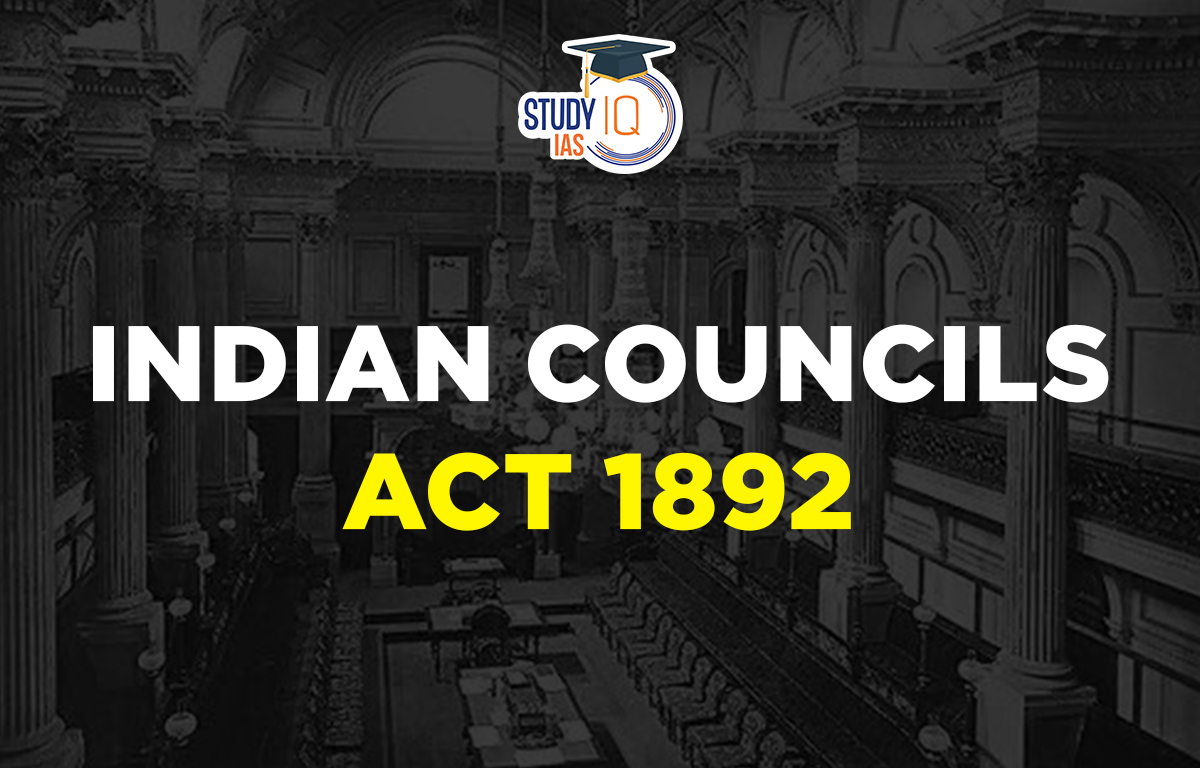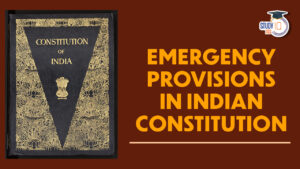Table of Contents
Indian Councils Act 1892
The Indian Councils Act of 1892 was passed with the intention of expanding the size of various Indian legislative councils and so enhancing Indian participation in British India’s government. The Indian Councils Act of 1892 marks an important turning point in India’s constitutional and political history after the foundation of the Indian National Congress. The Indian Councils Act of 1892, which is discussed in this article, is included in the UPSC Indian Polity and Governance Syllabus.
Read about: Charter Act of 1853
Indian Councils Act 1892 History
From the colonial government’s perspective, the Indian Councils Act 1861 was working as intended. However, nationalism in the country grew in the years that followed the uprising of 1857. The ordinary people in the nation developed shared goals and objectives for the nation.
This was viewed as a challenge to British dominance. In the meantime, the recently established Indian National Congress pushed for the nationwide expansion of administrative and legislative councils as well as the participation of a larger proportion of Indians in the council. Lord Dufferin was the nation’s Governor-General during the time of the INC constitution.
In order to get more Indians on the council, the INC pursued the government. The administration, on the other hand, mistrusted the aspirations of the educated Indians and did not regard them as genuine representatives of the Indian people. The colonial government eventually came to the conclusion that, in order to protect its interests in the country and slow the emergence of nationalism, it would be necessary to meet Indian demands that could be accommodated within a limited constitutional framework.
The colonial government passed the Indian Council Act of 1892 in an effort to achieve its goal of reducing the educated Indian population through a few constitutional amendments.
The Indian Councils Act 1892 Objective
An increase in the size of India’s legislative councils has a positive impact on the participation of Indians in British India’s administration.
Indian Councils Act 1892 Feature
The new act’s 1861 predecessor was similar to the new act in a number of ways. However, the Indian Council Act of 1892 included two significant revisions. The recently passed law mandated that the General-Governors council have at least 10 and no more than 16 members, with at least half of the council having no military background and the candidates picked effectively being non-official.
A legislation governing elections was one of the demands. The Indian Council Act of 1892, however, gave the governing Governor-General the power to invite the Indian groups to propose or elect council delegates.
The Punjab and Burma legislative councils may have been established in order to carry out the proposed law. The Calcutta Chamber of Commerce’s proposal led to the selection of one member. Typically, the suggested candidates were chosen to serve on the Governor-council. General’s The statute made it clear that the individuals chosen to serve on the council did not do so in their capacity as representatives of any Indian organizations, but rather as Governor-General nominees.
The annual financial accounts could be voted on by the elected members. The given documents, however, couldn’t be changed. The members of the provinces were occasionally permitted to view the expenditure and revenue heads of the industries that directly reported to the provincial governments.
Read about: Charter Act of 1833
The Indian Councils Act 1892 Provisions
While maintaining the official majority, it increased the number of (non-official) members in the Central and Provincial Legislative Councils.
- Bombay: 8
- Madras: 20
- Bengal: 20
- North Western province: 15
- Oudh: 15
- Central Legislative Council: Minimum10 and Maximum 16
The act made it explicit that the council members were chosen by the governor-general and not as representatives of any Indian organization. Members were now able to discuss the budget without having to cast a vote. They were also forbidden from pursuing the matter further. The elected members were allowed to speak about internal and official issues.
Subject to the Secretary of State for India’s assent, the Governor General in Council was given the power to establish the criteria for member nomination. A form of indirect voting was used to choose the council members. Universities, district boards, municipalities, zamindars, and chambers of commerce may nominate individuals to serve on provincial councils.
The Governor General’s consent is required for the provincial legislative councils to propose new legislation or repeal existing ones. The Governor was granted the power to fill the seat in the Central Legislature, whereas the Governor was given the power to fill the seat in the Provincial Legislature.
Indian Councils Act of 1892 Significance
It marked the start of India’s transition to a representative form of government. The increase in Indian population was positive. Indians’ opinions were taken into consideration despite the fact that they lacked the ability to overturn a majority decision.
The electoral concept, which was established in 1892, allowed for an unrestricted discussion of the government’s financial plan among non-officials. As a result, the administration had a chance to dispel misinformation and address complaints. The law provided council members the right to interrogate people on issues of public concern.
The Indian Councils Act 1892 Drawbacks
This act offered nothing to the average person, while being the first step toward a representative government in contemporary India.
The British only made a small concession, yet this act set the foundation for the emergence of numerous revolutionary movements in India. Many leaders, like Bal Gangadhar Tilak, criticised Congress for its moderate approach of petitions and persuasions and asked for a more confrontational approach to British authority.
The Indian Councils Act 1892 UPSC
An important turning point in the constitutional and political history of India is the Indian Councils Act, 1892. The act expanded the number of several legislative councils in India, which enhanced Indian participation in British India’s governance. The first step toward representative administration in modern India was the Indian Councils Act of 1892. Due to the British making only a small concession, the legislation paved the way for the emergence of revolutionary forces in India. This article has all the details about the Indian Councils Act of 1892 for UPSC Exam.


 India Mediation Campaign, Objectives, Pr...
India Mediation Campaign, Objectives, Pr...
 Emergency Provisions in Indian Constitut...
Emergency Provisions in Indian Constitut...
 Directive Principles of State Policy (DP...
Directive Principles of State Policy (DP...





















